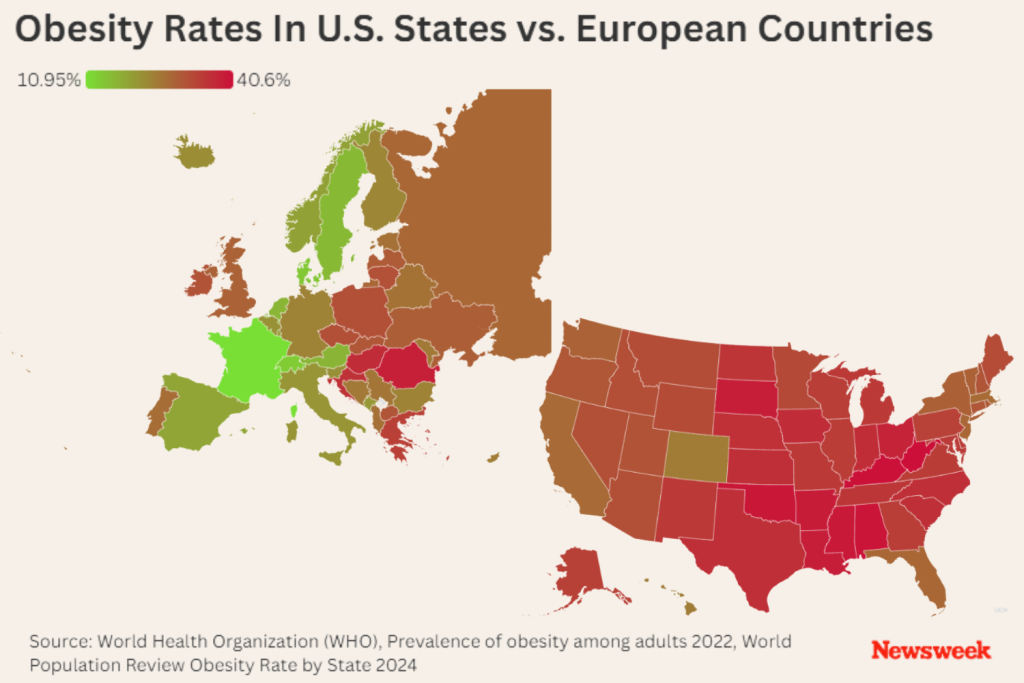The thread discussing obesity rates in the United States and Europe has sparked widely-commented discussions around this pressing public health issue. A recent map comparing U.S. states and European countries from 2024 reveals significant disparities, with many U.S. states exceeding 30% obesity rates, such as Mississippi and West Virginia, which reach up to 40%. Conversely, European nations, particularly those in the Mediterranean region, have lower rates under 25%. Factors contributing to these differences include diet, cultural habits, and lifestyle choices.
European countries, particularly Mediterranean nations, emphasize complementary foods like fresh produce, whole grains, and olive oil to support a balanced approach to diet. This contrast, however, is less evident in Western Europe, where portion sizes and cheaper groceries often lead to healthier eating habits. Urban planning and transportation infrastructure play a significant role in Obesity rates, as walking and public transit in European cities encourage physical activity.
Signs of improvement are evident. Over a decade since 2013, American obesity rates decreased slightly in 2023, moving from 46% to 45.6%, a slight decline. However, concerns about side effects such as nausea and digestive issues remain, particularly with medications like Ozempic and Wegovy, which suppress appetite and contribute to weight loss.
Despite this progress, significant disparities persist. Initially concerning, European Obesity rates havenow improved and are approaching 20%. Countries like Romania and Hungary remain at higher rates, while the United Kingdom has surpassed the United States in Obesity rates. The thread reflects on the complexities of weight and other societal challenges, offering solutions that balance health with practicality and sustainability.










